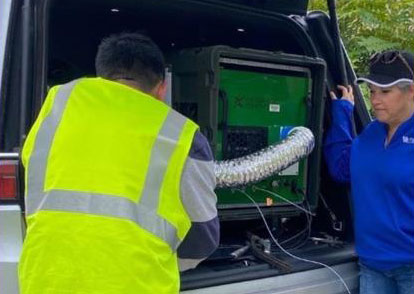
UK researchers, Entanglement Technologies use new mobile sensors to track pollution
News
03rd Jun 2025
The demand for accurate chemical monitoring sensors is rising globally, as industries continue to grapple with the legacy of manufacturing waste.
New commercial mobile monitoring platforms can be part of the solution to this rising challenge, provided they meet the same high standards as previous monitoring technology. Industry-academic partnerships are making this possible, advancing state-of-the-art detection science.
Globally, more than 5 billion sites exist that are contaminated with legacy industrial wastes and require remediation before they can be reused and/or redeveloped. Despite recent efforts to change manufacturing practices, the legacy of waste contamination and generation persists.
“Chemical wastes are part of our society,” says Kelly G. Pennell, Ph.D., the Earl Parker Robinson Chair Professor of Environment and Sustainability in the UK Stanley and Karen Pigman College of Engineering.
“The idea of zero-waste is both an aspirational goal and an elusive goal,” said Pennell. “We know that manufacturing ecosystems are being rapidly disrupted. As a result, there will be unintended, unimagined and uneven consequences of industrial waste that impact the health and environment in communities in various geographic locations.”
That’s why Pennell’s team at the University of Kentucky Superfund Research Center, which was funded by the National Institute of Environmental Health Sciences, collaborated with Entanglement Technologies, located in the San Francisco Bay Area, over the past decade to create meaningful solutions to the chemical waste challenge.